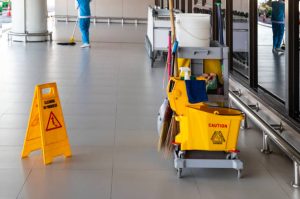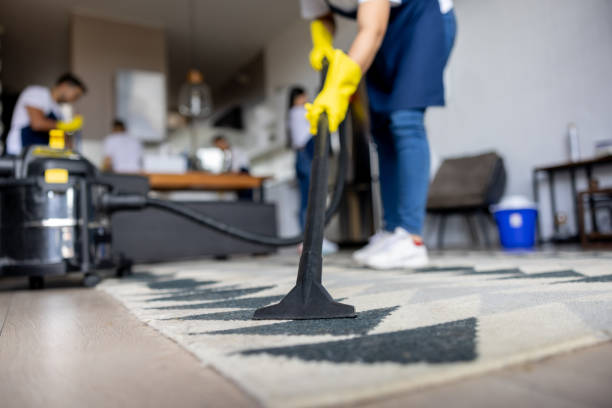The Unsung Hero: Dust Mopping for Daily Maintenance
Let’s face it, cleaning commercial floors isn’t the most glamorous job. Picture this: a well-kept office, buzzing with activities, and a floor that’s spotless, inviting, and, quite frankly, sparkling under those ceiling lights. Hard to imagine without daily maintenance, huh?
Dust mopping, often underrated, is a game-changer. Think of it as the daily bread of floor care. You wouldn’t skip your morning coffee, so why skip dust mopping? It’s the first line of defense against dirt, debris, and those tiny particles that love to settle on your floors. These little nuisances not only make your floors look dreadful but can also damage their surface over time.
Now, let’s break it down. Dust mopping is akin to a morning yoga routine for your floors. It stretches out the lifespan of hardwood, tile, and even carpeted surfaces by reducing wear and tear. A quick sweep removes abrasive dust that could, over time, scratch surfaces or embed into carpets, causing them to look dingy.
A common misconception is that vacuuming alone does the trick. Sure, vacuums rock, but they can’t catch everything. Especially in tight corners and under furniture. A trusty dust mop can glide gracefully into those narrow spaces, catching what a vacuum misses. Plus, it’s easier on your back! Ever tried lugging a vacuum around a bustling office? Not fun.

Let’s talk health benefits. Dust mopping routinely helps in reducing allergens. Offices are a hotbed for dust mites, pollen, and other nasties. Regular mopping catches these invaders before they become airborne, preventing that sneezy, coughy afternoon slump we’ve all experienced. Remember, a cleaner office means fewer sick days and happier employees.
Here’s a funny story: I once worked in an office where dust mopping was neglected for, let’s just say, an embarrassing amount of time. It got to the point where rolling around in an office chair felt like traversing a gravel path. After a thorough dust mopping session, the difference was night and day. Not only did the floors shine, but the overall mood in the office lifted. Coincidence? I think not!
But it’s not just about aesthetics or health. Dust mopping establishes a rhythm, a simple yet powerful daily act. Imagine a team that takes pride in tidiness – the positive effects ripple out, fostering a more organized, productive workspace.
So next time you see someone dust mopping, give them a nod of appreciation. They’re the unsung heroes of commercial floor cleanliness, quietly keeping things spick and span. And if you’re the one wielding the dust mop, pat yourself on the back. You’re not just cleaning – you’re setting the stage for a healthier, happier environment, one sweep at a time.
Matching Your Mop to Your Floor Type
Choosing the best tool for cleaning commercial floors can feel like chasing a wild goose. Different surfaces demand different dust mop types. The challenge lies in figuring out which mop suits which floor. One size definitely doesn’t fit all.
First up, let’s chat about hardwood floors. The beauty of hardwood is undeniable, but it’s also as picky as a toddler with new foods. Hardwood floors call for a dust mop with fine, soft fibers. A dry mop is your best friend here. Think of it as a gentle massage for the floors, capturing dust without scratching the surface. Microfiber mops work wonders, trapping dust in their tiny fibers like a seasoned detective dusting for fingerprints.
Tile floors, on the other hand, are like the middle child—versatile but often overlooked. They’re tough but come with those annoying grout lines where dirt loves to hide. For tiles, a slightly damp mop with a bit of elbow grease is ideal. Chenille mops are great because they resemble fluffy slippers that can sneak into the crevices and drag out all that hidden muck.
Then there are vinyl floors, the more laid-back, go-with-the-flow sibling. They’re sturdy and low-maintenance. Almost any mop can work here, but a flat, microfiber mop is perfect. It’s efficient and doesn’t leave any streaks behind, much like a magician wiping off their slate to start a new trick.
And let’s not forget concrete floors, often found in basements and garages. Concrete might look like it could take anything you throw at it, but it still needs the right touch. A mop with a hefty and robust build is needed here. String mops with larger heads work effectively, grabbing all the grit without bowing under pressure. Picture dragging a fishing net through the sea; nothing escapes its grasp.
Now, if you’re dealing with the luxurious marble or stone floors, think of them as diva actresses walking the red carpet. They need a lot of care and the proper gear. A soft, swivel-headed mop is ideal, gliding smoothly and covering every angle. It’s like giving the floors a delicate spa treatment. Egyptian cotton or lambswool options can also do the trick—fancy, right?
Oh, and don’t get me started on laminate floors. They might look tough but are just as fussy as hardwood. Just like a cat, they loathe water. So, a dry dust mop is non-negotiable. Microfiber pads come to the rescue again, zapping up dust without leaving any residue.
Let’s explore carpets, although technically, they aren’t floors in the traditional sense. They accumulate a lot of dust and dander. A dust mop here? Unthinkable for deep cleaning, but a handy dust mop can act like a pre-clean weapon, snagging loose debris before you haul out the vacuum cleaner.
Also, for those vintage fans with linoleum floors: they are sturdy but need gentle love. A lightly damp mop with microfiber is ideal, gently whisking away dirt without damaging the surface.
When we hit the commercial areas like gym floors and warehouses, hybrid mops with interchangeable heads might be your go-to. Think of it as assembling a superhero team—each part has its unique role.
In the end, navigating the dust mop aisle shouldn’t be like solving a Rubik’s Cube. Your floors are whispering their needs; you just need to listen.
Pay attention to the floor type you’ll be cleaning, and you’ll find the puzzle pieces fitting snugly in place.
Ready for a fun tidbit? My neighbor once tried using an old-school string mop on her pristine hardwood floors. The outcome? Scratch city! She found herself needing a pricey refinish. So, learn from her mishap: those extra few minutes spent thinking about the right mop type can save a lot of heartache and cash.






